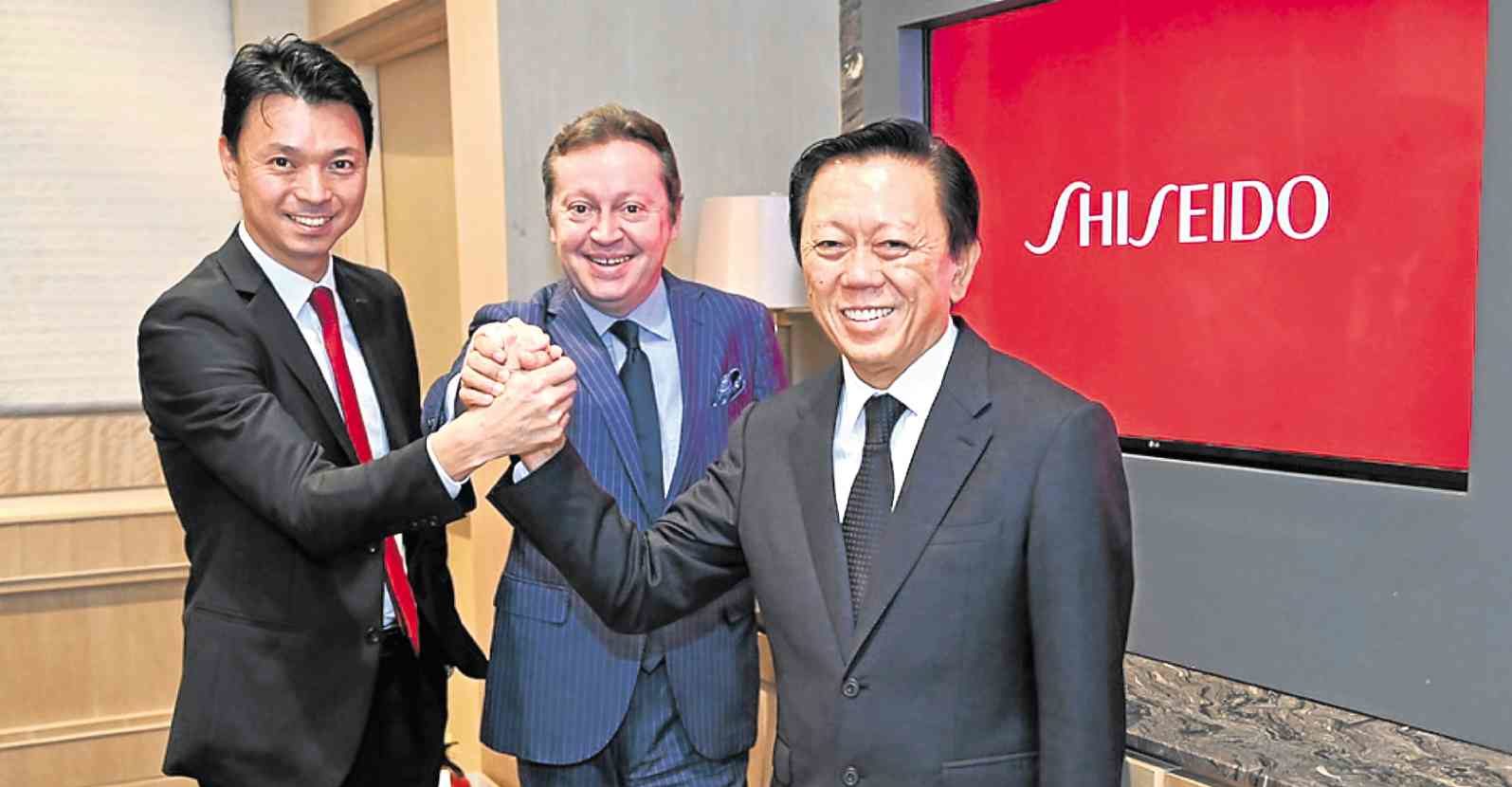
Shiseido has officially opened its doors in the Philippines by establishing Shiseido Philippines Corp., a joint venture between Shiseido Company, Limited and Luxasia Partners Pte. Ltd.
“The Philippines is an important and strategic market for Shiseido in Southeast Asia and it is an exciting time to be a part of the country’s booming beauty industry,” said Jean-Philippe Charrier, president and CEO of Shiseido Asia Pacific, who was in the country in September for the launch.
Beauty is a $3 billion business in the Philippines, said Sylvia Chim, corporate communications and sustainability director of Shiseido Asia Pacific.
“The Philippines is a very big market for makeup,” said Charrier.
Koji Nakata, Shiseido Philippines’ managing director, said, “I’ve been involved in a lot of projects in Japan and Singapore, but establishing Shiseido Philippines has been my most exciting project to date. As a business development director, I have managed a lot of emerging markets from Singapore. And the country I could see the fastest growth was in the Philippines.”
Shiseido, which was founded in 1872 as the first Western-style pharmacy in Japan before it evolved into a cosmetics company, is known all over the world for its innovative skincare, makeup and suncare products.
The company also brings with it an extensive portfolio of beauty brands including NARS, Laura Mercier, Senka and the fragrance lines of Issey Miyake, Narciso Rodriguez and Dolce & Gabbana.
“In order to craft a portfolio of brands, you need to look at what consumers want to shop for in the future… you have to pick winners for the future 10, 20, 30 years… it’s a long-term vision and acquisition,” said Charrier.
In their desire to be closer to the Southeast Asian market, in 2015, Shiseido moved its Asia Pacific headquarters from Tokyo to Singapore. Charrier, who proposed the move, said, “The group wanted to grow faster in Asia. We were very Japan-centric and we needed to go out of Japan. This has been a game changer for us.”
Innovation hub
People of 14 different nationalities work at the new headquarters, which opened in January. It includes an “innovation hub,” a training facility for employees from all over the region and Shiseido’s Life Quality Beauty Center, which Charrier describes as “a very special place, a corporate social project which started in Japan where we give service free of charge to people with skin concerns like vitiligo, birthmarks or changes in appearance because of cancer treatment.”
The beauty industry and the way people shop have changed a lot over the past few years, said Charrier. “Normally, cosmetics brands coming from overseas would go first to department stores to implement a brand,” he said. “That was the normal way to go to market and to reach maybe a little bit more high-income users.”
Specialty channels have become popular and, in Southeast Asia, freestanding stores where brands can create an experience for customers, added Charrier.
Shiseido sees e-commerce growing in the region, too. “I think it will increase dramatically in the future,” said Charrier. “We’ve been through a very big disruption of our shopping habits everywhere. And it’s very consistent.”
The brands people shop for have changed, too. “In the past it was only the big names… These days, people are more informed. They travel, they look on the internet, they discover smaller brands with different origins.”
For a company that’s been around for over 140 years, Shiseido continues to feel fresh, thanks to its many innovations. “It takes a lot of effort to catch up with consumer trends and launch new products,” said Charrier. “We update our counters, our service, the way we communicate with consumers, our channel strategy. We aren’t always 100-percent perfect. But we always try to cope with changes.”
He added, “We’ve always been a brand that has combined art and science. Sharing that with the world is very important for us.”
Shiseido was ahead of its time. In 1926, it launched its refillable products. “I think we are constantly looking at ways to give back, from an environmental and cultural standpoint, and also by empowering women,” said Chim. “Women empowerment is a very big priority for us.
“We launched a program in Cambodia to help 102 young female students graduate from high school this year. We’re very proud of that. And then looking to see where we can expand this women’s empowerment program.”
Asked to recommend a starter kit for people who have yet to try Shiseido and its portfolio of brands, Charrier said, “You need Senka cleanser. That’s a very easy way to start because everybody needs to wash their face. Then Ultimune, which is the star product of Shiseido. It’s a serum for people of all skin types and all ages. Then get a lipstick from NARS which is very fashionable, and foundation from Laura Mercier which is No. 1 in many countries.”
Right now, Charrier is excited about their foundations. “It’s a very important segment of the market. We are strong in skincare and I think foundation is in between skincare and makeup. This is a category where we want to expand our market share.”
Nakata is excited for Filipinos to discover Senka, a Japanese brand of cleansers. “It’s No. 1 in some countries. We are excited to offer a high quality but affordable brand to Filipinos. There are not too many cleansing brands here.”
Charrier said, “I hope that Shiseido’s entry to the Philippines will enable more Filipinos to have access to a wider range of beauty brands and products with the uncompromising quality, innovation and spirit of omotenashi or Japanese hospitality that only Shiseido can provide.”